Dig No Further: Renewing the Soil and the Self
Listen to this story. Narrated by Gayatri Ganesh.
This is a story of death and renewal who together keep the wheel of time spinning.
For something to be renewed, did something else have to die first?
Renewal is a story of shedding dead skin, sloughing, and moulting. Time delivers that new something to fill up the spaces that death and the old leave behind.
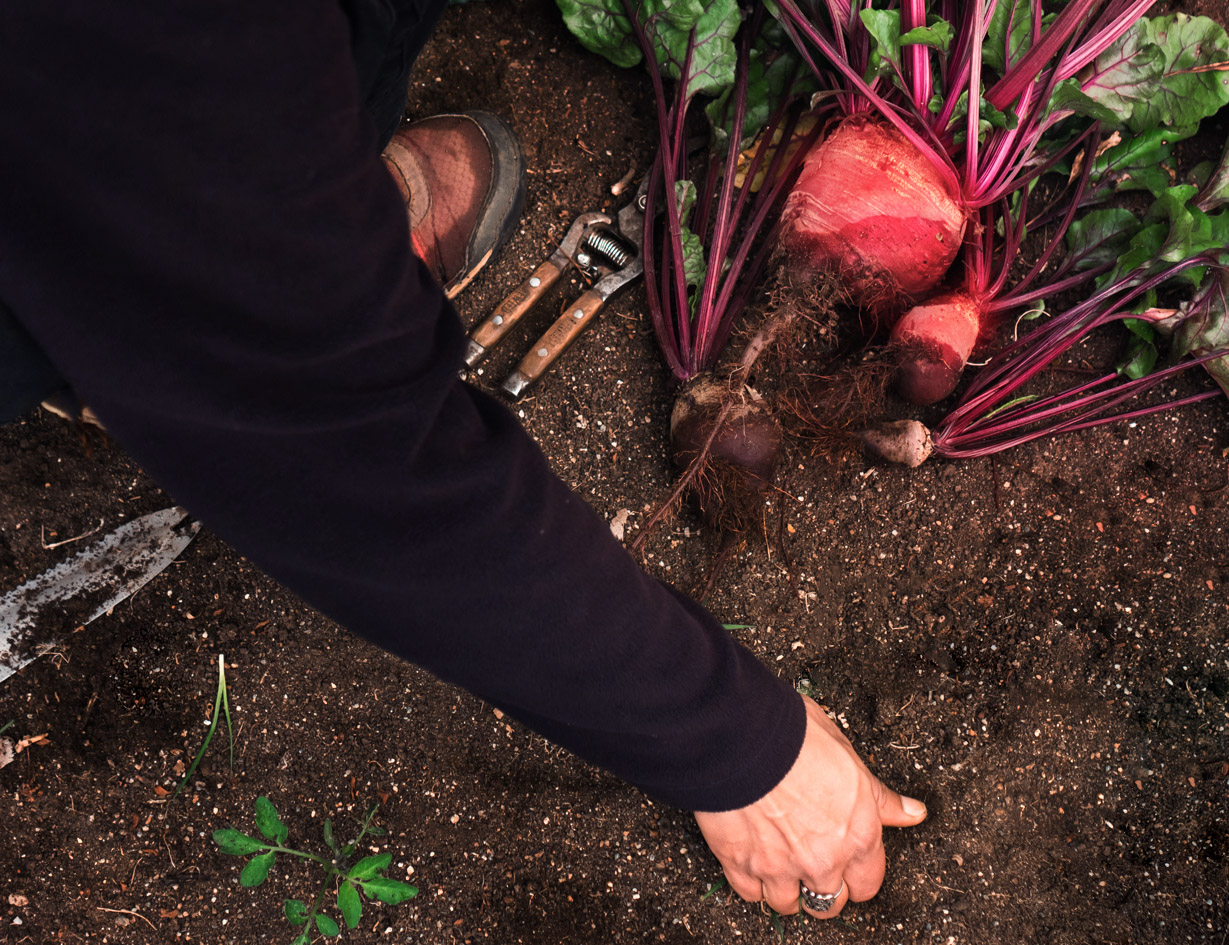
Mine is a story of nudging at the edges of how to grow food, tapping into and tiptoeing towards a direction, and eventually allowing nature to take my hand. I did not barge my way through growing vegetables. I did not get yanked into the world of regenerative food growing.
My vision of a garden and food forest evolves slowly in the spaces between dreaming and waking. In that space, I walk through what my mature food forest/garden would look like, the paths I want to go down, the shrubs that will greet me round the next corner. In that dream, I am released from human time, younger still while my garden ages.
Let’s get one thing out in the open. I’ve reconciled that I can be a lazy gardener–I’m happy to let plants do their thing. Happy to let the pak choi flower and go to seed, grateful for the coriander and mint that run riot over empty ground, doing the work of mulching better than I. I tell myself this is nature’s way–she experiences time differently than I. It all starts from a tiny seed packed with information. Under the right conditions of water, nutrients, and energy through light, it builds carbon in the form of plants that can nourish our bodies, alter our minds, and, at times, even poison us. That is nature’s way. She gives me back so much more bounty than the effort I put in. I feel useless in comparison–my rewards are too great.
But I compensate for my laziness by being attentive to the ways of the garden. I keep a journal and a calendar–it helps to remember when I sowed the seeds and planted out the saplings, in which beds at which times of the year. Where the caterpillars and slugs lurk, what the weather was like that month, new shadows as the fruit trees grow, which wild animals visited.
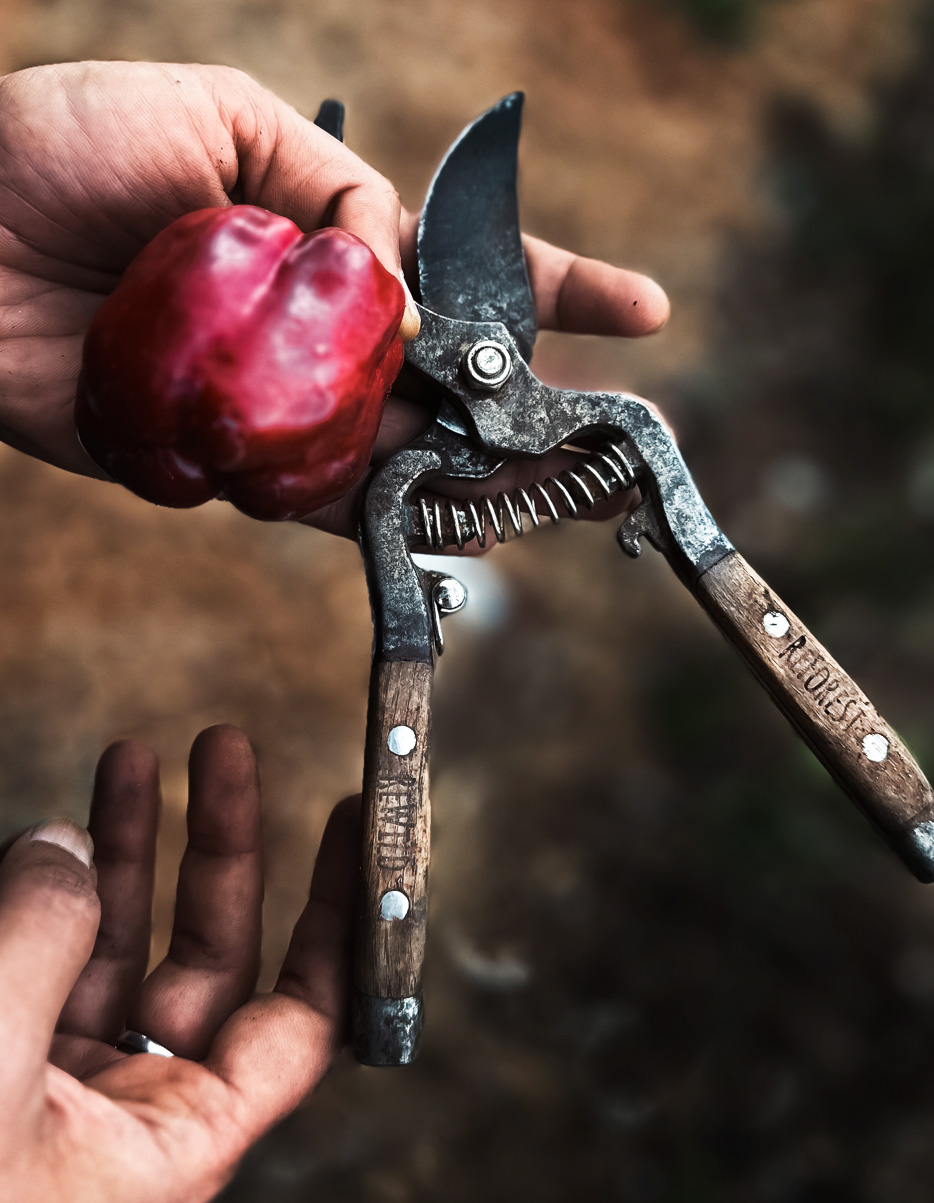

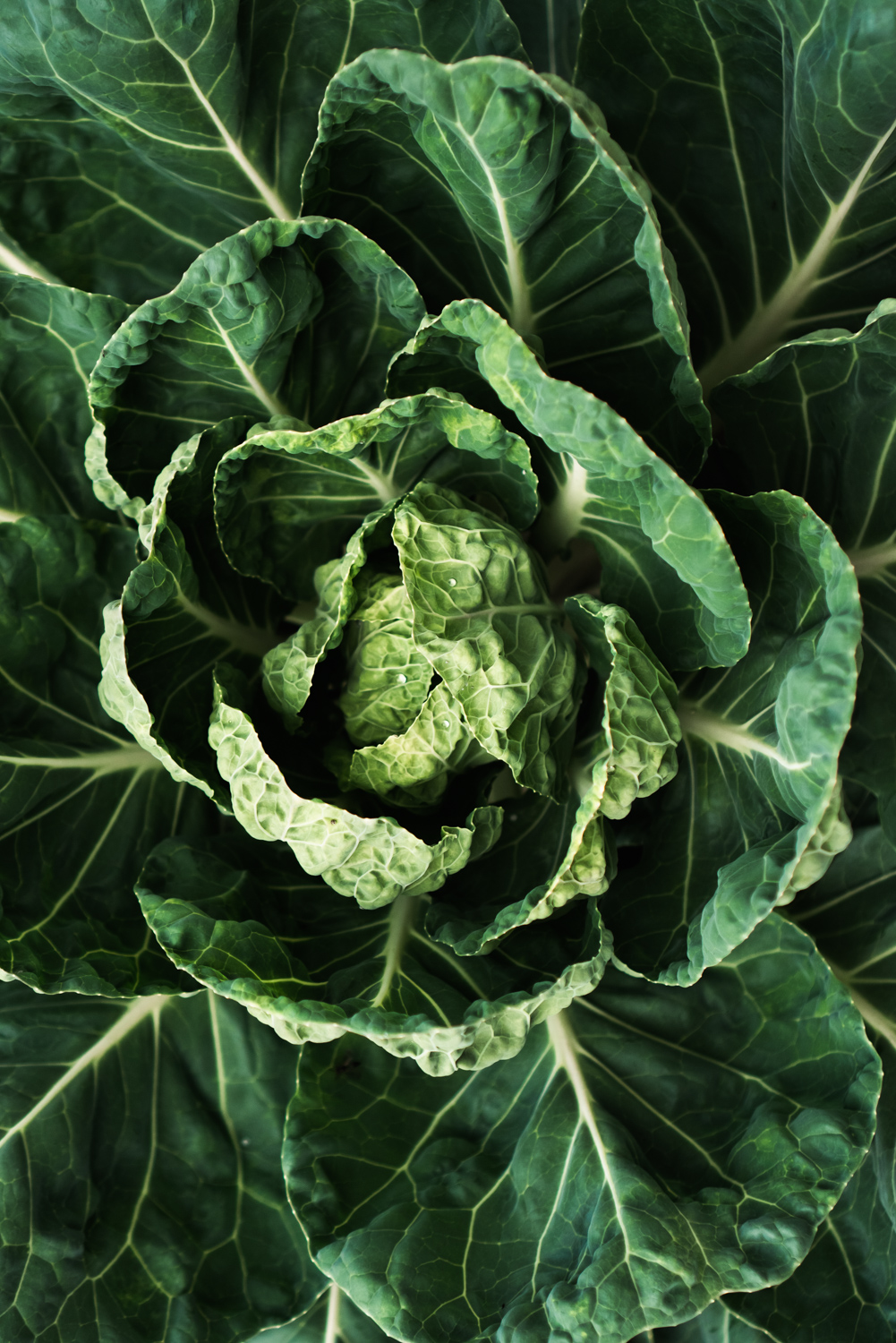
Reviewing, remembering, and renewing events of the past year always breaks a smile, even though some years are not as good as others for your cabbage harvest. Even though you may not always be analyzing and applying the carefully made notes. One’s life away from the garden also needs attention, and sometimes you don’t sow as many seeds that season as you had before.
But it does propel you to resolve to do more. A way to describe my learning in the garden is like walking through a forest. If you’ve ever had the privilege of walking through an old forest, your eyes would’ve had so much life to take in, that to prevent your brain turning to mush, the only way to proceed would’ve been slowly, each plant a touchstone to your learning.


Ten years ago, our parcel of land in the Nilgiris was a semi-productive, chemical intensive acre of tea. The space around our house was levelled with soil of poor quality brought-in from elsewhere. These disturbances to the land occurred before my time but is a testament that we need to regenerate that which was degraded. I had a blank canvas and a book on perennial flower gardens given to me by a dear friend. I had no confidence to grow vegetables at the time and sought out flowers instead. My friend told me that in the first year your garden sleeps, in the second it creeps, and in the third year it leaps!
It was about that time when the garden was to start creeping. The flower patches were looking fuller and more natural and I was planting more and more beds, a fluid freedom and creativity unleashed. The garden was my gym, art studio, and my classroom. My body was responding in tone and my mind was working out complementing leaf shapes and colours, the fall of sunlight and shadows through the day and the seasons, creating shade gardens, rock gardens and winding paths, composting, mulching weeds, gorging on Youtube videos and gardening shows. My garden reciprocated with its unfolding growth, rewiring me, and renewing my connection with the natural world.
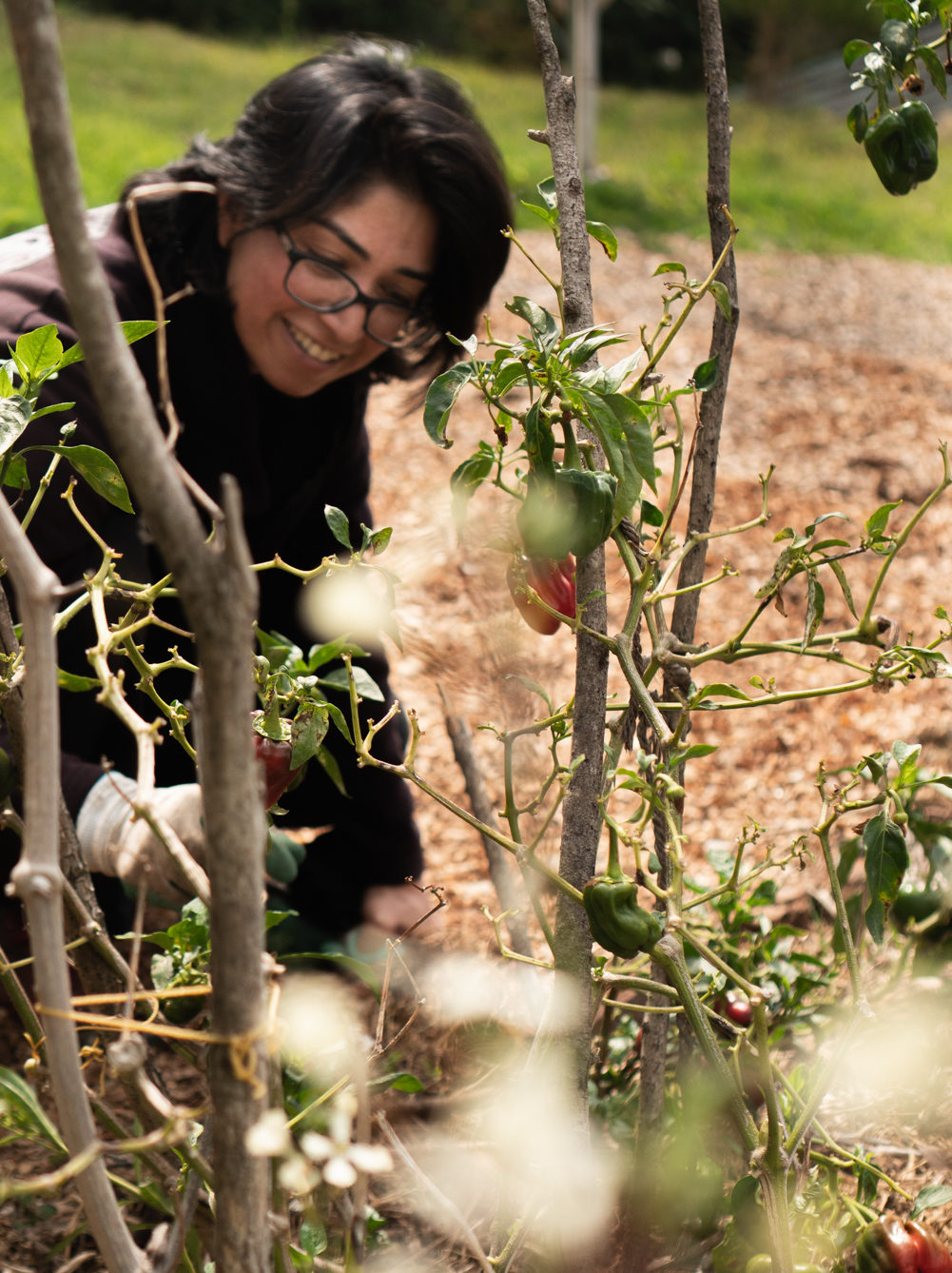
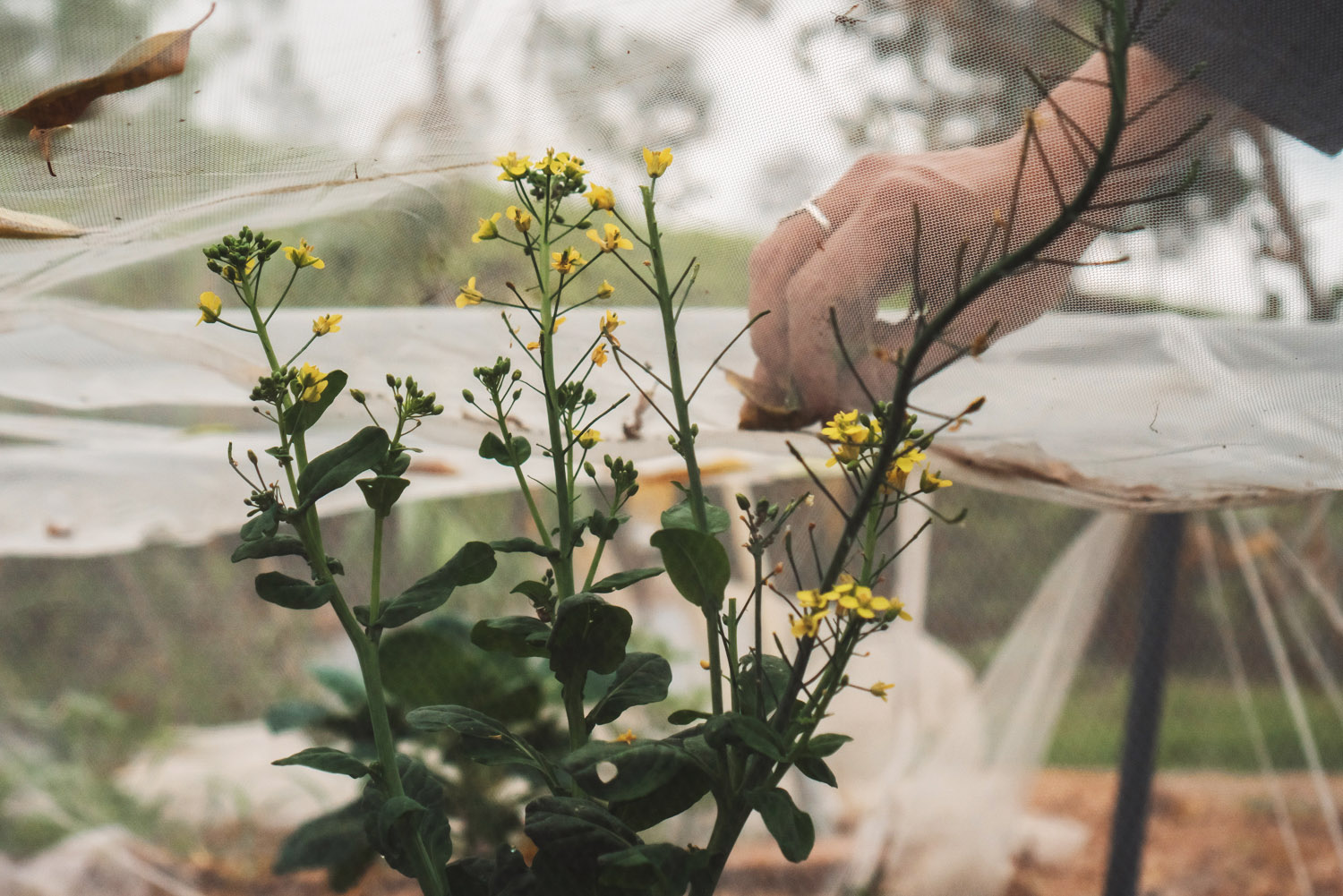
A healthy farm ecosystem or garden microbiome is in a constant state of renewal. Spent blooms are deadheaded so that the plant puts out new flowers. Leave the roots of your harvested veggies in the ground and you have added organic matter and fed the earthworms. Seek out a local saw mill and collect sawdust and woodchips for a small fee.
The bark of firewood (that if you burn will smoke) when stripped and shredded provides excellent mulch that will draw earthworms and other good creatures out to decompose it and add another dimension to soil structure and fertility. Nothing is ever “over” in the garden because to regenerate is to keep building that healthy foundation of soil that was created over millennia that we have now degraded by chemical intensive farming. Despite the destructive pressures we have inflicted on the land, we can still align with nature’s processes by creating a conducive environment for life to thrive underground. Regenerative farming keeps nature’s wheel of time and life spinning, that we are all a part of.
In June 2020 (a few months after I had turned 40) I experienced what I thought was my garden poisoning me, repelling me, breaking up with me. I developed an allergy in the form of hives – little white and red bumps spreading from my lips to around my mouth, and initially under my eyes, my face puffy and inflamed like a ripe peach. I had touched something (contact dermatitis?), I had breathed in something (pollen allergy?), been stung by something (sting allergy?). I had been working in the garden non-stop, with no hired help. It was a time of struggle. Just when my confidence, knowledge, and creativity were at its zenith, I was struck down and forced to cloister indoors for months. I was kept away from my garden, locked in my tower. The rains brought hope, irrigating the plants, as I watched my garden from afar.
When the hives began to settle, I was back in the garden, covered head to toe. Just my eyes and glasses popping out from under a monkey camp, my skin veiled from the nourishing gaze of the sun, and the soft touch of soil. For a time, I wore a face shield too. Every time I came in from the garden I would wash my hair and clothes of all that invisible pollen and dirt. A bee hat is still mandatory, as I have definitely become allergic to stings.
But I was determined to keep going, I refused to believe that nature was saying, it’s ‘you not me’. I was not going to let go of this relationship. Was I still connected to nature when I had sealed myself off from feeling the soil? The flowers kept blooming, so I concluded that the plants were happy that I had provided them with a roaring start. I was not being dumped, instead I was being given love and care by my garden–the plants encouraging me with their feet firmly rooted, their limbs growing strong, and their myriad faces bejewelled in petals of striking shapes and colours.
It was only by June 2021 that I realized I had an allergy to dairy which in some people manifests as hives rather than gastric discomfort. I eliminated dairy from my diet, my hives went away, and I walked straight into the arms of my garden. One could say that I had shed a skin of sorts. Something had to die, something had to heal for me to begin anew with my garden.

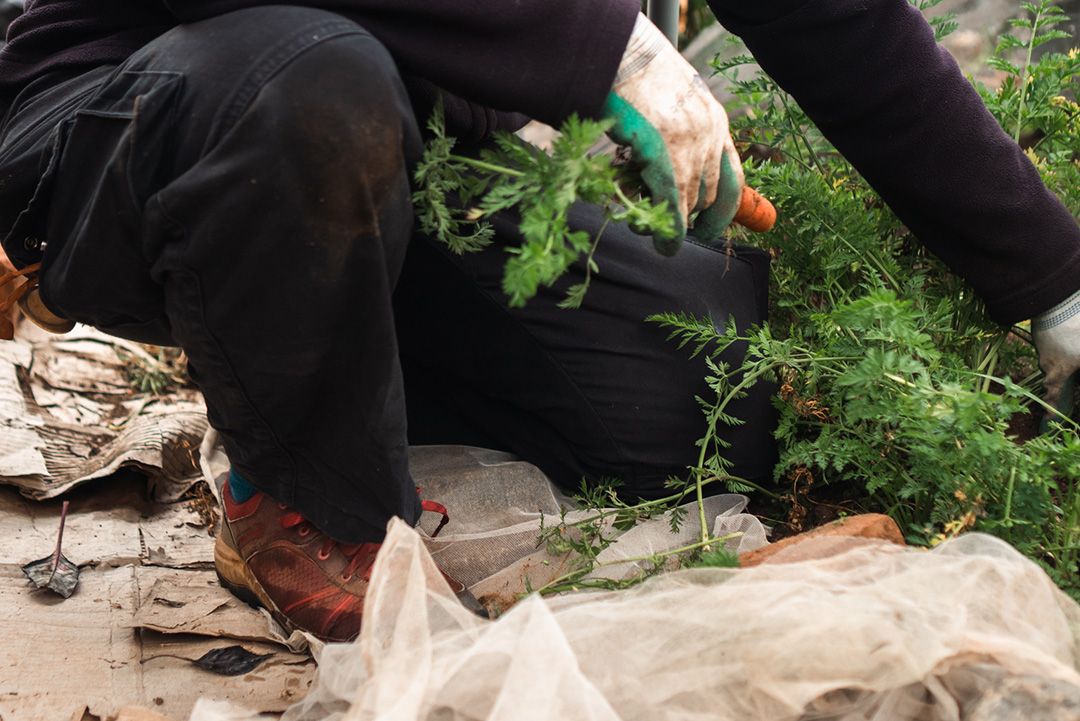
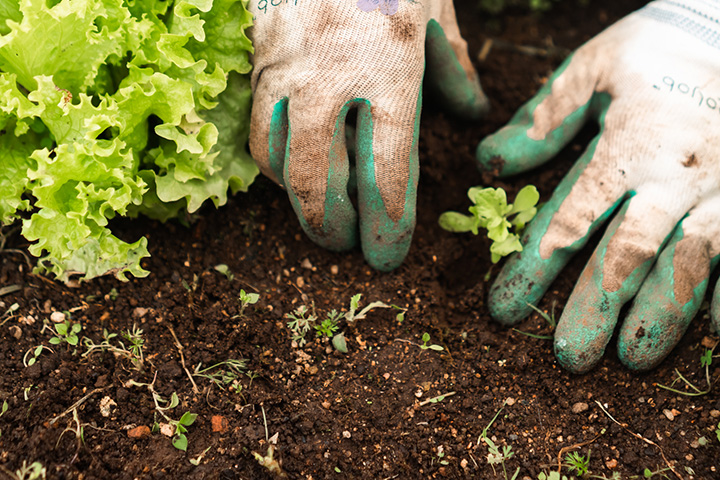
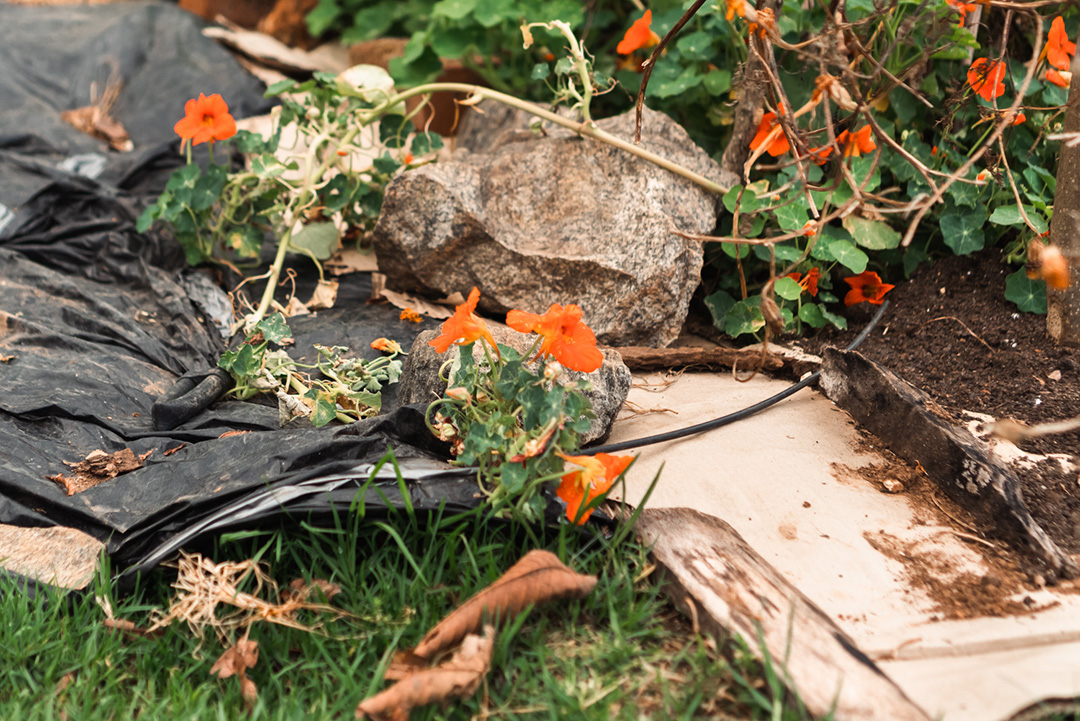
Magically, it was in this renewed phase that I found a method to grow vegetables that I could just ease into. It was also the simplest way to feed us and do good for the planet. A dear old friend from my past life posted on social media his no dig polytunnel with a reference to Charles Dowding. It seemed too simple to work, nothing I had heard of before in all my reading and viewing, and contradictory to anything I’ve done or know or read about growing plants. How do you sow a plant if you don’t dig a hole in the ground?
So how do you do no dig? You will need to stop reading or listening to this and go outside with all those Amazon cardboard boxes you have. Strip off the packaging tape – chemicals make it sticky, and you don’t want that leaching into your plants and into you. I get my cardboard from my local pet store, pharmacy, and grocery stores.
Lay the cardboard flat on to your lawn or weedy ground. Overlap the edges so that no light gets through to the ground below. You are killing weeds through light exclusion. At this point you can water the cardboard to make it less rigid. If, like most of us, you have a lawn of invasive Kikuyu grass , fear not and dig not. Then pile on 6 inches of compost directly on top of the cardboard. You don’t even need sideboards – you can create a mound. Then you do the no dig dance. Before sowing seeds, if you are feeling free and breezy in the garden, gently step, walk, shuffle on your beds to the musical beat of the tweets, chirps, chirrups, whoops and bass buzz tunes of the birds and bees. The structure of the undug soil is so good that stepping on it doesn’t compact it – dispelling another myth – that you should not walk on beds. Well, you can on a no dig bed.
After your bed looks level and inviting, make a hole with the back of a trowel and stick your vegetable saplings deep in or directly sow large seeds (okra, corn, beans etc) and water. Multi-sowing is another technique that works so well in no dig beds. I multi-sow beetroots, onions, leeks, knol khol, lettuce, rocket, spinach, and table radish. Multi-sowing saves time, effort, and space in the garden. Compost is reapplied on the surface of the no dig bed once a year, about an inch thick layer.
So, here’s what you are really doing alongside the steps above. That weedy lawn grass is slowly going to die because of light exclusion from the cardboard. If you lift up the cardboard from the sides, you will see very pale yellow and white grass dying and adding organic mulch to the soil. You are inviting all the bacteria and fungi to return as the grass decomposes. The wet cardboard will attract legions of earthworms who will break it down, turn it around, doing the boogie-woogie and shaking it all about, adding organic matter and structure to the soil below. The compost is going to enrich all of this while providing a deliciously rich environment for your plants. It is a myth that compost is too rich for saplings.
A word on compost and its edaphic properties. Compost is not soil. Compost is decomposed organic matter ranging from recognizable plant parts (roots, leaves, stems) to humus, which is partly decomposed plant material that is amorphous, aerated, and spongy in nature. Organic matter contributes to a soil’s ability to retain nutrients and water. It aids in holding nutrients because negatively charged compounds in humus attract and hold positively charged plant nutrient ions. It helps provide water because humus can absorb 80-90% of its weight in water and therefore contributes to a soil’s ability to hold water under drought conditions. My no-dig beds require a good drenching only in the dry winter season and have survived unscathed even after heavy monsoon rains. This is completely unlike the compacted soil most of us have in the garden–where soil remains airless, comparatively lifeless, and where water can hardly soak in or drain. Everybody can start making their own compost. A number of kits for small and large spaces are ready to use or you can set up your own system to make hot compost that also kills weed seeds.
You are going to have a lot of questions about no dig (and composting) as you unlearn what you know of traditional food gardening that requires you to dig and plough. Such as, can the plant roots grow through the cardboard? Will my carrots and parsnips go all squiggly at the end, will they fork? Will no dig work in hard, clayey, compacted soil, filled with gravel?
My garden is covered by invasive Kikuyu grass growing over construction debris making it lumpy and uneven. But by mulching the soil with compost, I have created a healthy growing environment and improved the less than healthy soils below, which had no doubt been sprayed with chemicals and tilled for decades. The simplest ideas are sometimes the greatest. No dig can be applied to any climatic zone, soil type, for home or market garden purposes. It is easy on your back. You don’t have to dig a vegetable or flower bed ever again.
No Dig or no till is a low impact method of farming and growing vegetables. A concept that allows you to work alongside and give back to nature, rather than only take. You are building healthy soils by rewriting nutrient pathways, and feeding a network of life that rewards you with plentiful harvests and nourishment beyond what you feel you deserve. But that’s what nature does when you treat her right–she is selfless. Plants bequeath a generous portion of themselves to feed humans. The no dig method is a totem to regeneration, a totem to the absence of the hubris we have displayed in the commodification of nature. I preach it wherever I go.
I urge you to explore no dig by Charles Dowding who has been practising and researching no dig for his market garden Homeacres, in Somerset, UK for many decades. I call him The Wizard because he is the kind of guru who shows you how it’s done, spreading the secret, making it easy and intuitive so that you are not dependent on the guru anymore. You can take those lessons and then the freedom to regenerate is in your hands, not anyone else’s.
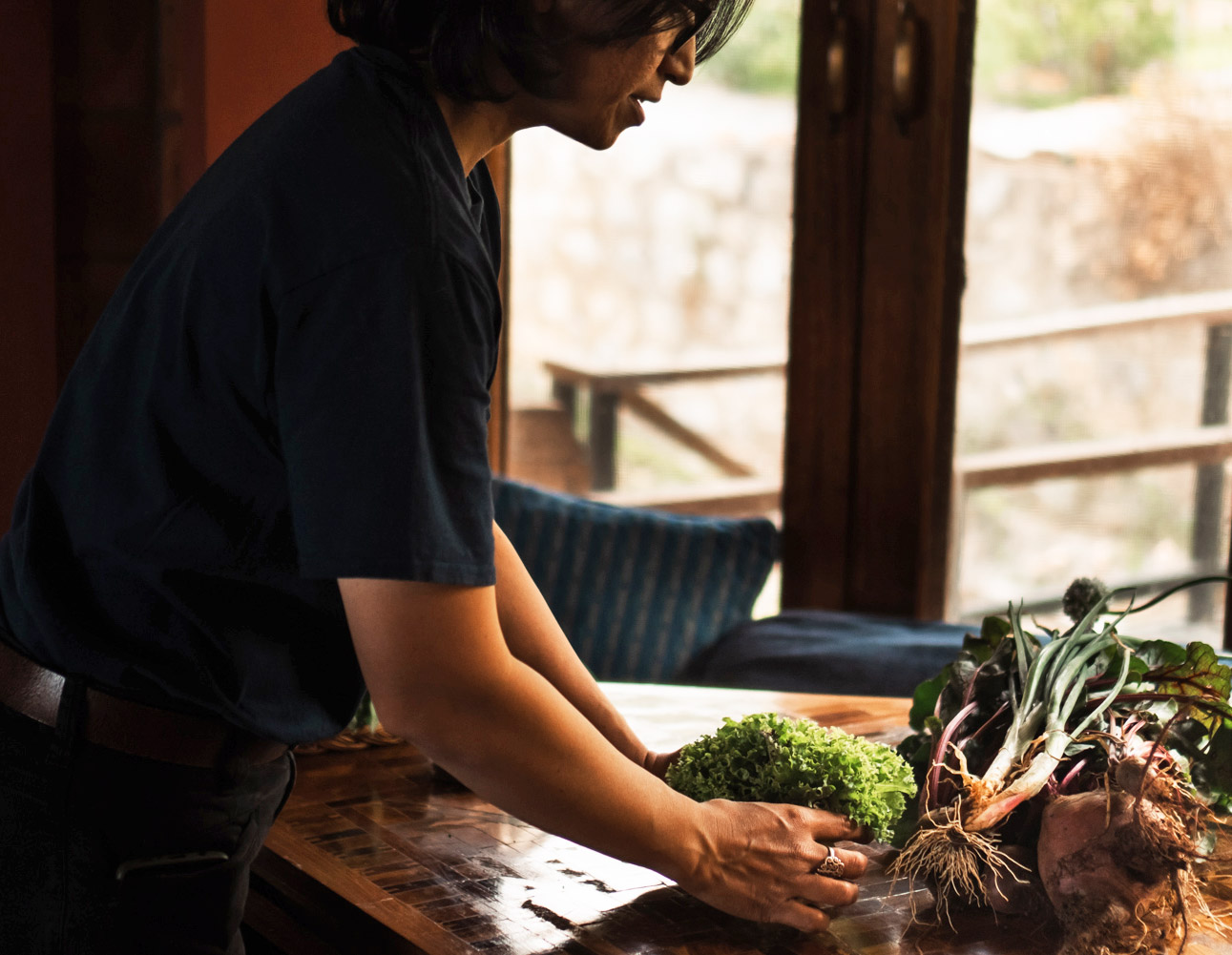
For me, no dig is like having a conversation with a friend who doesn’t judge you. But the disagreements you may have are like the aphids, slugs, and caterpillars that make me pay more attention to that conversation, looking at the larger picture of my garden microbiome. No dig allowed me quick access to nature’s secrets, allowed me to begin a reciprocal relationship with nature, in the simplest and most basic of ways: feeding oneself and one’s loved ones.
When your roots are strong, when the fundamentals of a concept are unshakeable, it just flows. I wouldn’t be writing this if I hadn’t found a confidence and effortless abundance of harvests that the no dig method bestows.
At first when my no dig garden was effortlessly thriving, a nagging burden like that of a parent tugged at me. How do I grow a sustainable food garden to feed us all year long? Thinking about sustainability always made me feel like I was not doing enough. The pressure glued me to the starter’s block for years. But then I found Huw Richards, a UK-based no dig gardener who reassuringly explained what he calls ‘part-time self-sufficiency’. A sustainable food garden can mean one ingredient from the garden in one meal once a week, increasing the number of ingredients from the garden over time, or only eating from the garden on the weekends. Growing food is not a sprint–it is a lifelong investment in the future of nature. It is important to give yourself time and flexibility in your food growing journey, taking the time to observe the rhythms of your garden.
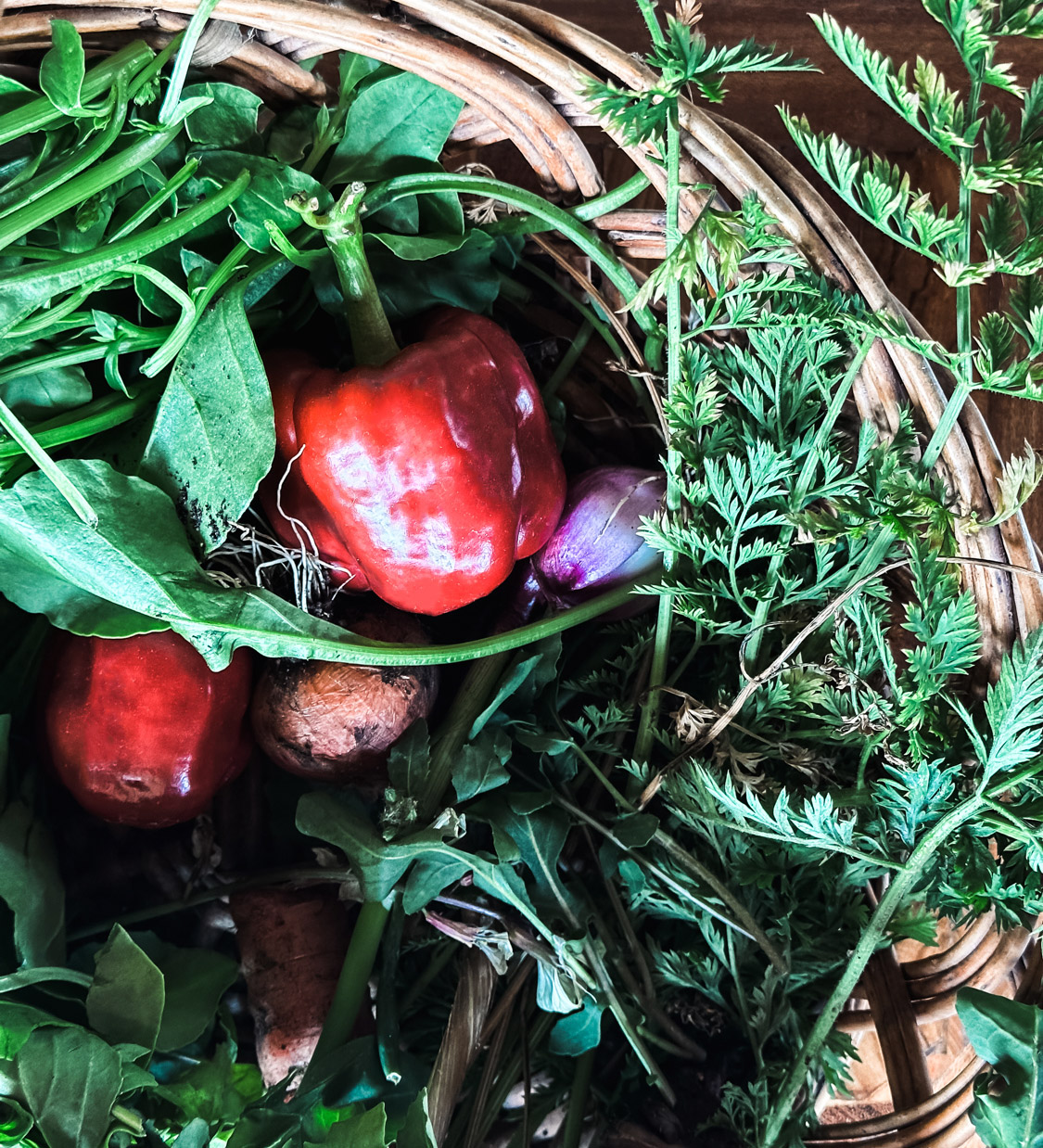
The five basic principles of regenerative farming are:
- Don’t disturb the soil: A labyrinth of life (fungal threads, microbes, air pockets, earthworms) provide below and above ground benefits. Plowing, rototilling, or even digging with a spade accelerates the loss of stored carbon into the atmosphere.
- Keep the soil surface covered or mulched: Mulching the soil with compost, grass clipping and/or ground cover crops acts as a protective layer that reduces erosion, helps retain moisture that creates a better nutrient cycle, and promotes beneficial microorganisms.
- Keep living roots in the soil: Planting cover crops in between main crops, has immense benefits for promoting microorganisms that build organic matter thereby nourishing the soil and the food grown. Cover crops attract pollinators, repel pests, reduce weeds and erosion, thereby reducing disturbance to the soil.
- Grow a diverse range of crops – like in a meadow – monocultures do not occur in nature, neither do straight lines. Make your garden a love map to nature’s odd shapes and mixtures.
- Integrate grazing animals: Perhaps the most challenging aspect for a home garden is to integrate livestock, such as chickens and grazing animals. Managed grazing, by rotating animals through different lands, gives plants the time to recover and prevents overgrazing.
Regenerative farming seeks to holistically bring back the complexity of the ecosystem that provides us with food. The method replenishes the environment rather than bleeding it dry. If a farmer is using regenerative methods and not disturbing the soil, he or she is instead mitigating climate change effects by building organic matter. The more organic matter you have in the soil, the more water-holding capacity you have, and the more biodiversity you attract.
Healthy soil is a kaleidoscope of beings working hard beneath our feet: digesting, chewing, feasting on sugars that plants exude from their roots, decomposing, pooping. The whole system is fuelled by plants and helps to grow plants. This is a simple and fundamental way you can contribute to climate action. The few who threaten the health of the planet, have a yen for overdosing on the gifts of the earth. Many are joining the ranks of regenerative practices coupled with decentralized food growing, which is perhaps our best chance to feed ourselves as the planet warms.
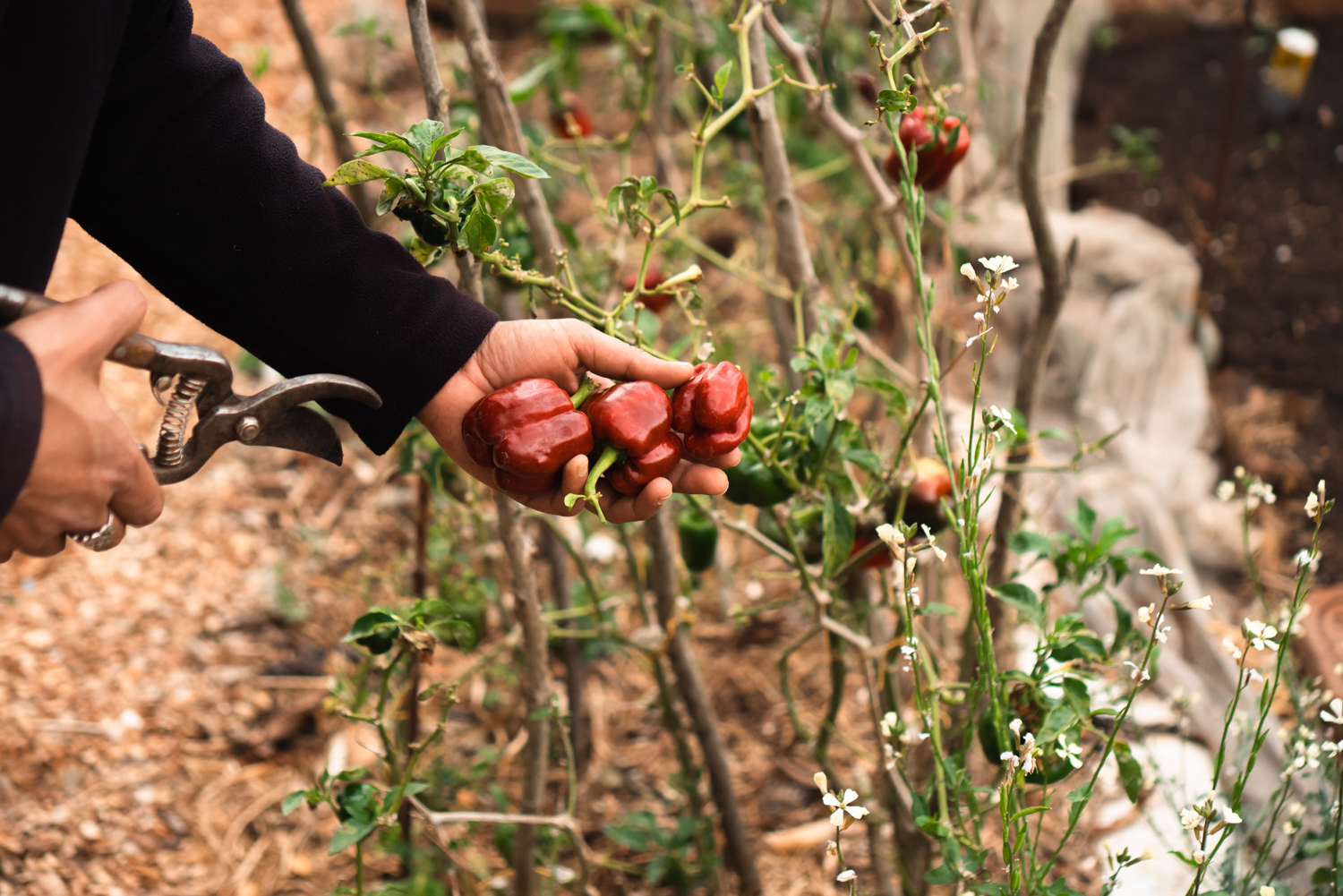
Renewal can be a raging realization.
But often it is a chaser, sometimes a struggle spawned from a quietly building reconciliation that wraps around you like a filament. Like lianas in a forest embracing the rocks by streams. If we, the human species on this planet, would re-align with the natural processes of the earth, change our present course through regenerative farming to renew the soil, then there might be hope for us after all.
Something, anything, from the garden in your food, will make you smile. That smile will keep you sowing and growing smartly, caring observantly, and connecting deeply with the plants you nurture. With the no dig method you will bear witness to plentiful harvests and a garden brimming with food and life. Every new wonder in the garden pushes me to explore further and walk deeper into that dream of a mature no dig food forest. In the waking world, it will be a physically aged me walking through that food forest but younger at that moment than I ever will be.
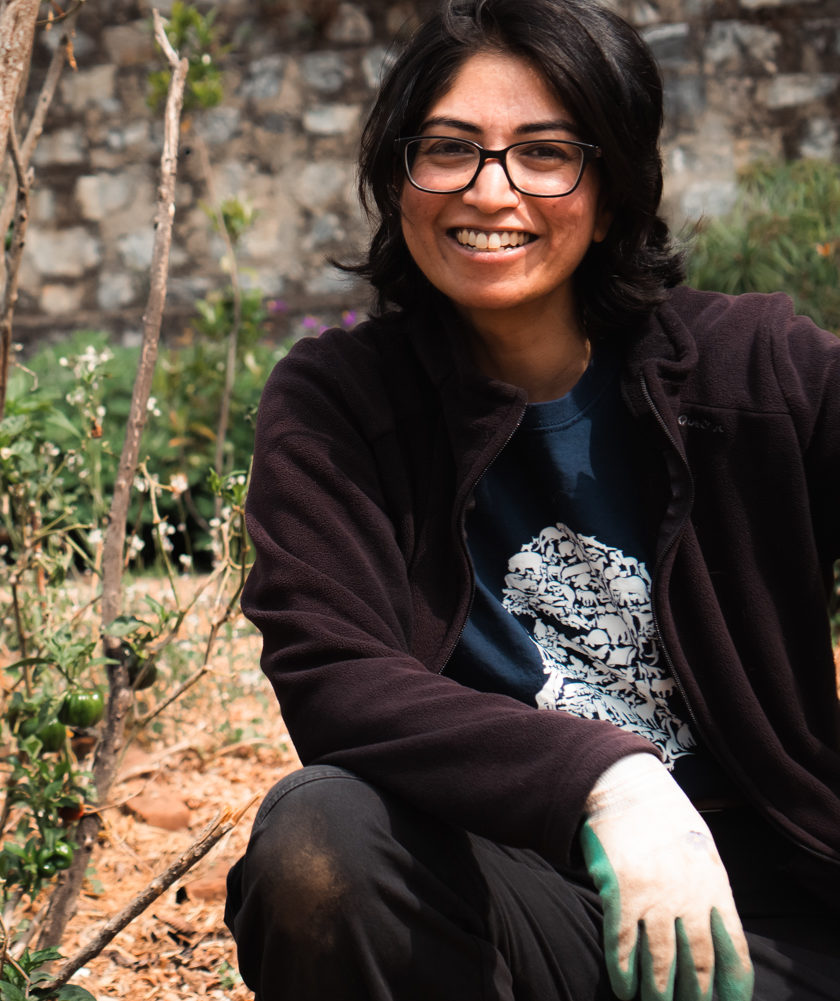
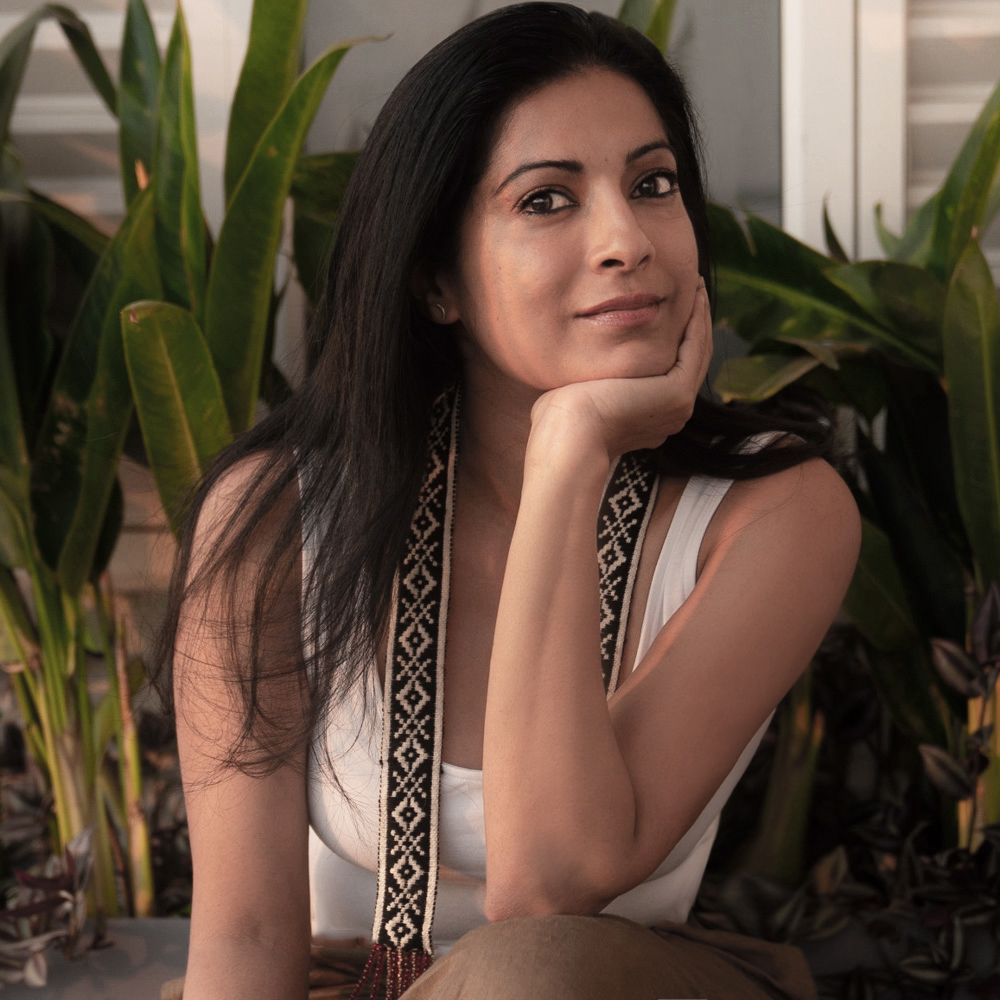

This article is about rejuvenation of the soil and the soul. The birds in the background add to the feeling of oneness with nature. The passion and total involvement of the author come through so well. I now look at life in a different, more insightful way, with humility at the laws of nature. Nature nurtured us, but we are too impatient with its gentle and wise ways. Modern life wants instant gratification for a burgeoning population which is outgrowing the planet. So we need to learn more about natures laws to do things the right way.
Gayatri poured her heart and soul into this piece <3 It is beautiful and illuminating, indeed!
Very well written, Gayatri! Your commitment and joy shines through . The ‘no dig ‘ concept is new for most. Would like to check on Charles Dowding here in Somerset. This article is so inspirational. Good luck!
Well written and inspirational ! Gayatri seems committed and passionate , as she shares the secrets of ‘no dig’ gardening and draws the reader into her realm.
Thank you Rebecca, it was a rejuvenating experience to put the actions and thoughts in to words.
I am a big fan of organic farming with Jeevamritham and panchagavya as the only fertilisers. There is plenty of info about these ancient soil regenerating techniques on the internet nowadays
We lost our way, took another path, and now I hope we are back to realising the truths of old ways that were in tune with nature. Thank you for reading the article and for your comment.
Great article. Love the details about the no dig concept. Amazing work in regeneration. Continue and write. Will send you pics of my garden. We use mushroom dirt which is very rich compost and the earthworms look like small snakes !